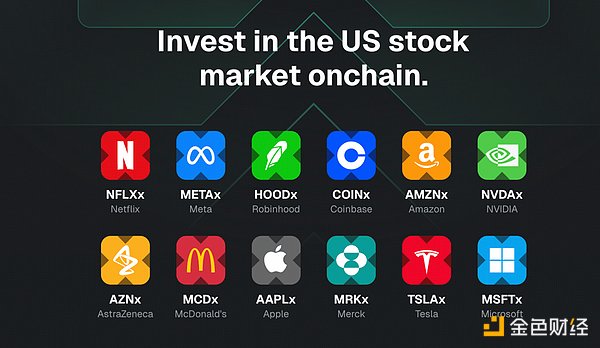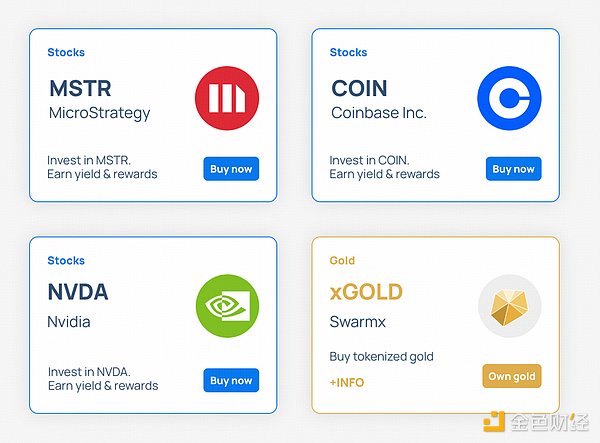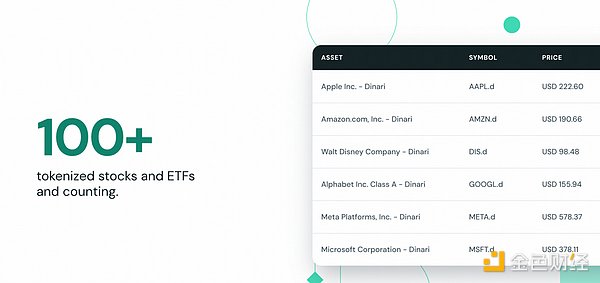Author: 0xEdwardyw; Source: tokeninsight
Tokenized Securities: The Integration and Reshaping of Digital Finance
This article will explore the definition and operation mechanism of tokenized securities, introduce leading projects in this field, and analyze the key risks and regulatory challenges they face.
1. What are tokenized securities and how do they work?
Tokenized securities are essentially digital tokens that represent ownership of traditional financial assets (such as stocks and bonds) on the blockchain. In short, tokenization is the conversion of real-world assets into digital tokens that can be traded on the blockchain. For example, instead of holding a paper stock certificate or a record in a brokerage's database, an investor holds a cryptographic token that represents a company's shares. These tokens are backed by actual assets and confer the same property rights, they are just a new type of digital encapsulation of the asset.
At a high level, tokenized securities work by binding real assets to blockchain-based tokens. Its typical support, issuance and trading process is as follows:
Underlying assets and custody:
The real-world assets to be tokenized are held by a trusted entity (such as a financial company). In the case of stocks, this means purchasing and custodial actual company shares.
Tokens are usually fully collateralized 1:1 by the underlying assets, that is, each token corresponds to one (or part) of the custodial shares.
A licensed custodian (usually a bank or regulated company) holds the actual shares or other assets in trust, ensuring that the tokens have real value backing them.
Token issuance on the blockchain:
The issuer creates digital tokens on a blockchain platform to represent these assets. This typically involves smart contracts - self-executing code on the blockchain that manages the properties of the tokens (such as total supply and redeemability).
The issuance of tokens is subject to applicable laws and regulations (for example, some platforms follow the Swiss Distributed Ledger Technology Act).
The resulting cryptographic token (usually following standards such as Ethereum ERC-20) legally or contractually corresponds to the real asset in custody.
Token Trading:
Once issued, these security tokens can be traded like cryptocurrencies, both on specialized exchanges and sometimes on decentralized finance (DeFi) platforms.
Holders can buy and sell tokenized shares 24/7 on supported exchanges or through peer-to-peer transactions, without the need for a traditional stockbroker.
The token price is designed to closely track the price of the underlying asset.
Overall, the system relies on trust in the issuer/custodian. The blockchain records token ownership and makes transfers transparent and fast. At the same time, the custodian guarantees that every token in circulation corresponds to the real asset in the reserve.
Second, Stablecoins and Tokenized Securities: Opening the Door to the U.S. Market for the World
For many investors outside the United States, gaining exposure to U.S. stocks has long been difficult. High fees, regulatory restrictions, limited brokerage account access, and inconvenient trading hours all create significant friction, especially for retail investors in emerging markets. While U.S. stocks remain one of the most popular assets in the world, the traditional financial system provides few seamless and inclusive pathways for international participants.
This is where blockchain innovation begins to fill this gap. Tokenized securities combined with stablecoins provide access and infrastructure:
Tokenized stocks (like Apple or Tesla shares issued by platforms like Backed Finance and Securitize) allow investors to gain exposure to real U.S. stocks on-chain, often in fractional form, without the need for traditional brokerage services.
Stablecoins (such as USDC or USDT) serve as a borderless medium of exchange, enabling near-instant, low-cost settlement of these securities across time zones and jurisdictions.
With progress in US stablecoin regulation, highlighted by the recent Senate advancement of the GENIUS Act, there is widespread optimism that a clear legal framework could accelerate the integration of tokenized finance. With compliant stablecoins facilitating frictionless global payments, and tokenized securities providing transparent access to US assets, a liquidity loop may finally emerge where capital can be moved, invested, and settled entirely on-chain, across borders, and without traditional gatekeepers.
III. Industry-leading projects
In recent years, tokenized securities have moved from theory to practice, and some well-known projects are in a leading position in this field.
Backed Finance
Background: A Swiss fintech company that focuses on tokenizing real-world assets (stocks, bonds, indices, etc.) into freely tradable tokens.
Example of cooperation: In May 2025, the cryptocurrency exchange Kraken announced a partnership with Backed Finance to provide more than 50 tokenized US stocks and ETFs (such as AAPL, TSLA, NVDA) to customers outside the United States.
Product Features:
Each Backed token (such as "APPLx" representing Apple or "TSLAx" for Tesla) is fully collateralized by the underlying stocks held by a licensed custodian.
The issued xStocks are freely transferable tokens, not locked to a single platform, and can be kept in self-custodial wallets by users.
In addition to basic trading on centralized exchanges, xStocks can also be used on decentralized exchanges (DEXs) and integrated into lending protocols.

Swarm
Background: A European blockchain platform dedicated to connecting traditional finance with decentralized finance (DeFi).
Core Functionality: Allows real-world assets to be converted into digital tokens and traded 24/7 on decentralized exchanges, while fully complying with financial regulations.
Tokenizable Assets: Wide range, including publicly traded stocks, bonds, real estate, and even niche assets such as carbon credits.
Practical Examples: Tokenized versions of popular tech stocks (such as Apple, Tesla, Intel) have been launched, as well as short-term US Treasury bond funds (through iShares ETF products).

Regulatory Compliance:
Background: An American fintech company that aims to democratize access to U.S. stocks through blockchain technology.
Core Product: dShares, an ERC-20 token that represents fractional ownership of real-world assets such as US stocks and ETFs.
Mechanism: Each dShare is fully collateralized and backed 1:1 with the corresponding underlying asset. The issuance and redemption of dShares are managed through automated smart contracts and cooperation with clearing services.

Securitize
Background: An American fintech company and one of the leading platforms in tokenized securities.
Core Services: Provides a fully digital, regulated platform for issuing and trading digital asset securities - converting traditional financial assets (such as stocks, bonds, investment fund shares) into blockchain tokens that can be easily bought and sold.
Cooperation Case: Partnered with major asset managers such as BlackRock, Hamilton Lane and KKR to launch tokenized investment funds on the blockchain. These tokens enable investors to partially access private equity funds, venture capital funds or stock/bond portfolios in a more convenient form.


Four. Risks and Challenges
As an emerging field, tokenized securities also face a series of key risks and regulatory challenges.
Custodian and Counterparty Risk:
Purchasing a tokenized security means trusting that the issuer actually holds the underlying assets and acts in good faith.
This involves reliance on custodians and issuers, unlike purely decentralized assets such as Bitcoin.
If the company that holds the real shares on your behalf goes bankrupt, is hacked, or even commits fraud, your tokens may become worthless due to the loss of support. Essentially, you are not only trusting the code, but also trusting a company to safely hold your assets.
Technology and Smart Contract Risks:
Tokenized securities run on blockchain networks and rely on smart contracts, so they inherit typical crypto risks.
Smart contracts may have vulnerabilities that can be exploited by hackers. There have been cases in the DeFi space where losses or thefts have occurred due to defects in token contracts or protocols.
If token contracts are not written properly, fake tokens may be minted maliciously.
The blockchain platform itself may also pose risks, for example, if the token is on a chain with less security or decentralization, there may be risks of cyber attacks or downtime.
Regulatory uncertainty:
Tokenized stocks are essentially securities and are subject to complex securities laws.
Different countries have different regulations, and many regulators have not yet fully clarified how to treat blockchain-based securities.
For example, in the United States, the SEC has strict requirements for public offerings of securities, and to date, no tokenized stock products have been approved by U.S. retail investors.
Platforms often restrict tokenized securities to non-US residents to avoid running afoul of US law.
The lack of clear global standards means uncertainty: projects may launch in a grey area and later face legal hurdles, or regulators may take action if they believe their offerings circumvent investor protections.
 Clement
Clement
 Clement
Clement Davin
Davin Jasper
Jasper Joy
Joy Catherine
Catherine Hui Xin
Hui Xin Jixu
Jixu Joy
Joy Davin
Davin Jasper
Jasper